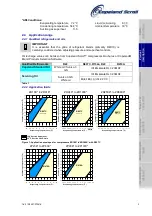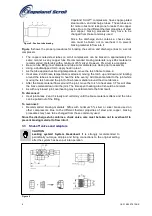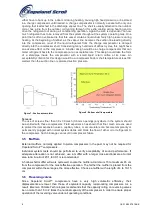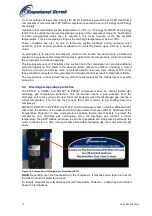
C6.2.19/0507-0708/E
17
5.8
Shell temperature
The top shell and discharge line can briefly but repeatedly reach temperatures above 177°C if
the compressor cycles on its internal protection devices. This only happens under rare
circumstances and can be caused by the failure of system components such as the condenser
or evaporator fan or loss of charge and depends upon the type of expansion control. Care must
be taken to ensure that wiring or other materials that could be damaged by these temperatures
do not come in contact with the shell.
5.9
Pump down cycle
A pump down cycle for control of refrigerant migration may be used in conjunction with a
crankcase heater when the compressor is located so that cold air blowing over the compressor
makes the crankcase heater ineffective.
If a pump down cycle is used, a separate external check valve must be added
. The scroll
discharge check valve is designed to stop extended reverse rotation and prevent high-pressure
gas from leaking rapidly into the low side after shut off. The check valve will in some cases leak
more than reciprocating compressor discharge reeds, normally used with pump down, causing
the scroll compressor to recycle more frequently. Repeated short-cycling of this nature can result
in a low oil situation and consequent damage to the compressor. The low-pressure control
differential has to be reviewed since a relatively large volume of gas will re-expand from the high
side of the compressor into the low side after shutdown.
Pressure control setting: Never set the low-pressure control to shut off outside of the
operating envelope. To prevent the compressor from running into problems during such
faults as loss of charge or partial blockage, the control should not be set lower than -15°C
to -12°C equivalent suction pressure below the lowest design operating point.
5.10 Minimum run time
Emerson Climate Technologies recommends a maximum of 10 starts per hour. There is no
minimum off time because scroll compressors start unloaded, even if the system has
unbalanced pressures. The most critical consideration is the minimum run time required to return
oil to the compressor after start-up. To establish the minimum run time obtain a sample
compressor equipped with a sight tube (available from Emerson Climate Technologies) and
install it in a system with the longest connecting lines that are approved for the system. The
minimum on time becomes the time required for oil lost during compressor start-up to return to
the compressor sump and restore a minimal oil level that will ensure oil pick-up through the
crankshaft. Cycling the compressor for a shorter period than this, for instance to maintain very
tight temperature control, will result in progressive loss of oil and damage to the compressor.
5.11 Shut-off sound
The Scroll compressors incorporate a device which limits reverse rotation. The momentary
reversal of direction of the scrolls has no effect on compressor durability and is entirely normal.
5.12 Excessive liquid flood-back tests
To test for
excessive continuous liquid refrigerant flood-back
, it is necessary to operate the
system in a test room at conditions where steady state flood-back may occur (low ambient
heating operation). Thermo-couples should be attached to the suction and discharge lines
(approximately 150 mm from the shell) as well as the sump (middle of the bottom) of the
compressor and insulated. These thermocouples should be insulated from the ambient air in
order to record true shell and line temperatures. If the system is designed to be field charged it
should be overcharged by 15% in this test to simulate overcharging commonly found in field
installations.
The system should be operated at an indoor temperature of 21°C and outdoor temperature
extremes (-18°C or lower) in heating mode which produces flood-back conditions. The
compressor suction and discharge pressures and sump temperature should be recorded. The
system should be allowed to frost up for several hours (disabling the defrost control and spraying
water on the outdoor coil may be necessary) to cause the saturated suction temperature to fall to
-23°C or below. The compressor sump temperature must remain above saturated suction
temperature as shown in
Figure 8
or design changes must be made to reduce the amount of
S
a
fe
ty
in
s
tr
u
c
ti
o
n
s
P
ro
d
u
c
t
d
e
s
c
ri
p
ti
o
n
In
s
ta
ll
a
ti
o
n
E
le
c
tr
ic
a
l
c
o
n
n
e
c
ti
o
n
S
ta
rt
in
g
u
p
&
o
p
e
ra
ti
o
n
M
a
in
te
n
a
n
c
e
&
re
p
a
ir
D
is
m
a
n
tl
in
g
&
d
is
p
o
s
a
l
Содержание Copeland Scroll ZP23K Series
Страница 24: ... ...



















